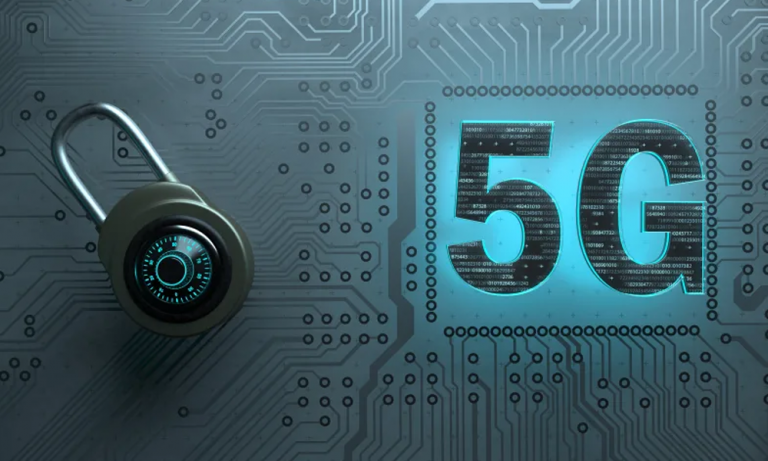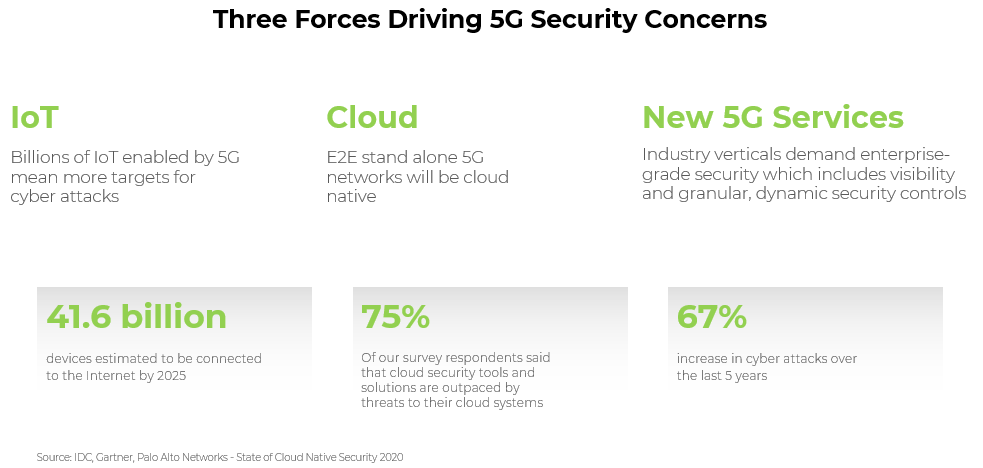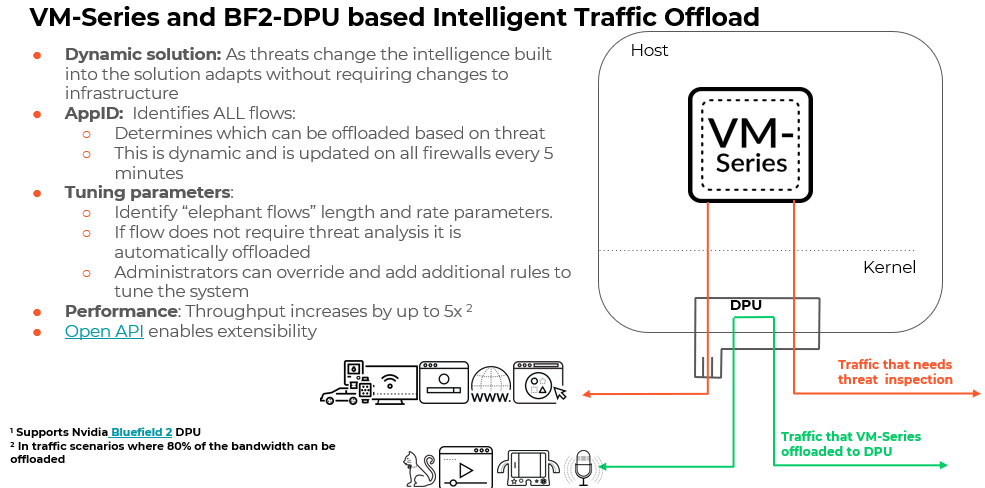 Watch the replay of this joint session at GTC 21 to learn about achieving near-line rate speed of a next-generation firewall through the use of DPUs for a highly efficient 5G native security solution.
Watch the replay of this joint session at GTC 21 to learn about achieving near-line rate speed of a next-generation firewall through the use of DPUs for a highly efficient 5G native security solution.
5G is unlike earlier generations of wireless networks. 5G offers many new capabilities such as lower latency, higher reliability and throughput, agile service deployment through cloud-native architectures, greater device density, and more. The adoption of 5G and its expanded capabilities drives the bandwidth requirements of mobile networks to 100Gbps and beyond.
With 5G and the increasingly frequent implementations of cloud computing, a new direction in cyber-security is required to maintain adequate protection. Today’s cyber-attack methods are demonstrating increased sophistication and going after larger attack surfaces. Coupling this with modern cloud environments – which are more vulnerable than on-premises deployments – makes proper security enforcement difficult. With 5G, a new approach to security is needed to achieve adequate protection.

Next-generation 5G Firewall
Palo Alto Networks and NVIDIA have collaborated to create a scalable, adaptive security solution that combines the Palo Alto Next-Generation Firewall with the NVIDIA BlueField-2 Data Processing Unit (DPU). Integrating these two raises the bar for high-performance security in virtualized software-defined networks. The NVIDIA BlueField-2 DPU provides a rich set of network offload engines designed to address evolving security needs within demanding markets such as 5G and the cloud. Palo Alto Networks has taken its expertise in securing enterprise and mobile networks and applied it to 5G. They used this knowledge to implement a 5G-native security initiative that includes a virtual firewall. The virtual firewall is designed to meet the stringent security needs of 5G cloud-native environments, offering scale, operational simplicity, and automation, enabling customers to gain unparalleled security protection.

For data centers looking to modernize their security infrastructure within 5G and cloud environments, the power of a software-defined, hardware-accelerated security architecture from NVIDIA and Palo Alto Networks provides increased infrastructure efficiency, granular zero-trust security across the entire solution stack, and streamlined security and management operations.

The dynamic nature of this solution has intelligent traffic offloads built in so that it adapts to real-time threats without requiring changes to the network infrastructure. The NVIDIA ASAP2 VNF offload technology filters or steers traffic for elephant flows identified based on AppID. Further, this AppID is used to inspect the first few packets to detect if it contains a threat or if it can offload the flow. If the packet is not suitable for offload, it is sent to the firewall for inspection. If the firewall determines the session is of no threat, it is sent to the PAN gRPCd process that calls the DPU daemon to add the session to the DPU session table for future offloading. The DPU will handle all subsequent packets in the flow without consuming any server CPU cycles for firewall processing. The solution provides up to 100Gb/s throughput with 80% of traffic offloaded to the DPU and ensures the highest performance without utilizing the CPU. This results in an throughput increase of 5X compared to host-based traditional firewall security solutions.
At GTC 21, NVIDIA and Palo Alto Networks jointly presented the intelligent traffic offload use-case for 5G native security. Watch the replay of this joint session to learn about achieving near-line rate speed of a next-generation firewall through the use of DPUs for a highly efficient 5G native security solution. Don’t miss the demonstration showcasing the flexibility, programmability, and agility of the Palo Alto Networks and NVIDIA joint cyber-security solution. The GA of this solution is targeted for May 2021. Please connect with your NVIDIA or Palo Alto Networks sales representatives to learn more.
Click here to watch the recorded session from GTC.
